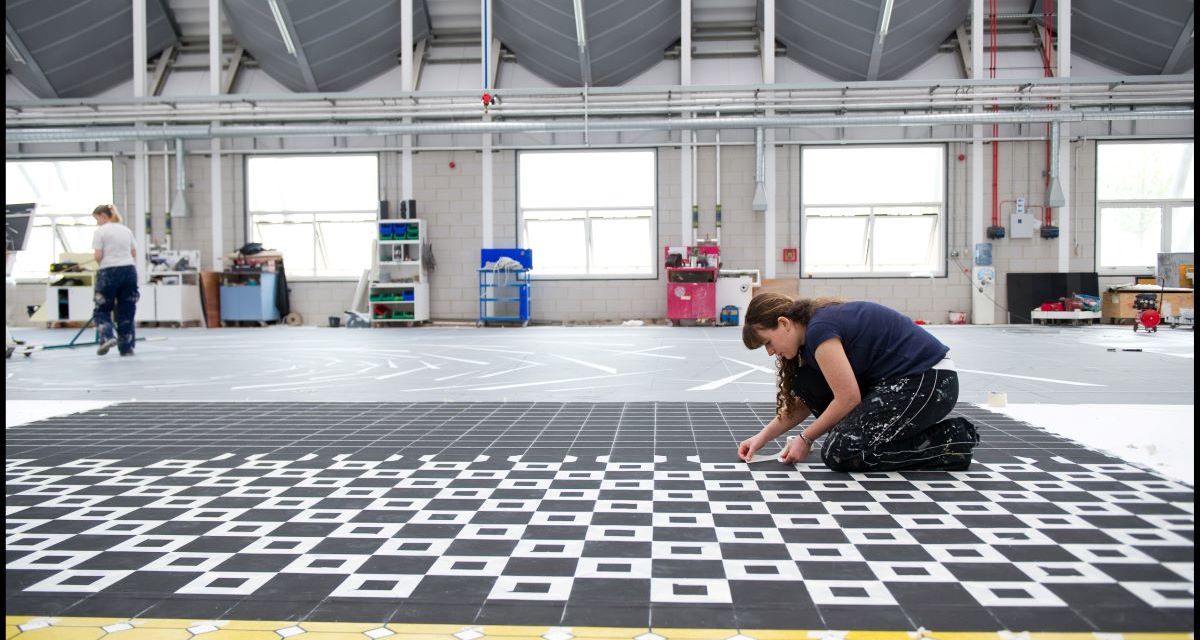The set designer’s job, in essence, is to physically bring to life the director’s vision of how a production should look. They design and help to create the worlds in which the characters live, building the physical surroundings in which the action will take place.
This includes designing and building scenery, such as rooms, buildings and outside spaces, furnishings and props, as well as aspects of presentation such as the stage’s angle and even size.
The set should contextualise the action for the audience, helping to set the atmosphere and give clues as to a scene’s time of day, location, season and even time period. Every opera will have very different requirements – and even different productions of the same opera can vary hugely. Some might require a very stripped down set of just a few props on an otherwise empty stage, while others might ask for the creation of complex locations with limited space and materials.
Two men drinking, for example, is the same action, but will look very different in a 1980s winebar in London compared to a 16th century inn in Wiltshire. The very different sets – along with such things as costume, lighting and even sound – provide the context.
One of opera’s greatest love stories illustrates this very well. Puccini’s La bohème (The Bohemians, 1896) has a universal message that is ripe for reinterpretation and indeed has been modernised and retold many times. How might a set designer differently create the look for a traditional production set in 19th century France compared to, say, one set in 1980s New York during the Aids crisis?
The opera opens on Christmas Eve with penniless friends Rodolfo and Marcello singing about how cold they are in their attic apartment. The acting, the music and the words will essentially be the same, but the look will be unique to each production, and that’s the work of the set designer.
For the former, the set might be a cramped garret with lots of dark wood and a wood-burning stove. The latter could be set in a light, airy New York loft apartment. The different looks would immediately communicate to the audience a sense of time and place. Changes in scenery also help convey changes in acts – think of the difference between the artists’ dilapidated home compared to the opulent surroundings of Café Momus.
The role can involve quite a lot of research, as the set designer will need to know about the time period in which the story is set – whether that’s historical, contemporary or futuristic. Architectural, cultural and decorative details all have to be accurate. Anachronisms can easily ruin the feel of a set – unless it’s deliberate.
The set designer will also design and create the backstage area, allowing for safe and easy movement for the actors and stagehands.
The set designer works closely with the director. The role is both creative and practical. It involves both creating the designs and building the scenery, props and so on. A job will start with getting to know the script inside out in order to understand exactly what physical objects the dialogue calls for.
This is a highly collaborative role and the set designer will work with the director, art director, costume designer and lighting designer in order to establish the mood for each scene and the visual guidelines for the world they are building.
Once the set designer has the design concept in mind it’s time to start realising it. This starts with creating a storyboard, plans, drawings and scale models of the sets. These are essential in communicating the concept to the wider team, including the set builders, carpenters, propmasters, electricians, painters and so on.
Now it’s time to start building all the elements that make up the sets and backstage. The set designer will manage the whole team, as well as set and manage budgets, overseeing the whole process to ensure that the construction crew execute the plans accurately. They’ll also likely get involved with the actual construction themselves.
With theatre productions like opera, the set designer is constrained by the physical space available – this isn’t necessarily the case for film and TV sets. They also have to keep in mind that a live audience will be in attendance – will they be able to see the action?
The set designer needs a unique combination of skills and knowledge, ranging from an understanding of fine arts, design skills, practical experience of actually constructing props and sets to people management, money management and communication skills.
Many set designers will hold a degree in fine arts, visual arts, design or similar. They then gain practical training by working on various theatre productions. A good way to obtain relevant experience is to volunteer at a local theatre, if you have one close by. Most universities have a drama society, which is a very good way to gain invaluable skills. Competition for the role is high, and gaining relevant experience really is essential.
Most set designers are freelancers, which means salaries vary widely. The more experience you have, the higher rate you’ll command, but as with all arts jobs the pay isn’t high. Working hours tend to be very flexible, but also long and often involve working at night or weekends.
The set designer will likely attend rehearsals to ensure the actors can move through the sets safely and naturally, as well as use the props as intended. However, once the production opens, their work is done and they can sit back and relax – or move onto the next show.
Image
As well as creating the concept for the set designs, the set designer will help build the scenery and props.

